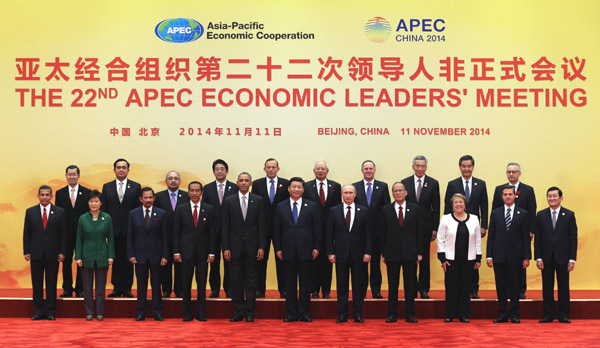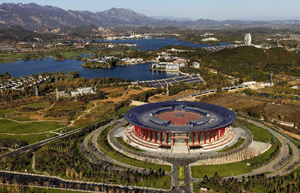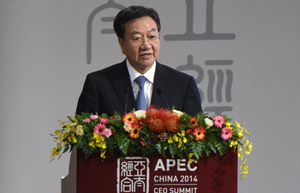 |
|
Leaders and representatives of APEC member economies pose for a picture after the first phase of the 22nd APEC Economic Leaders' Meeting in Beijing on Tuesday. [Provided to China Daily] |
Blueprint seeks to have members meet targets for cross-border exchanges to get ongoing growth
APEC members adopted a blueprint on Tuesday to strengthen physical, institutional and people-to-people connectivity and promote regional bonds. The blueprint asks members to make substantive moves and meet agreed-upon targets by 2025.
President Xi Jinping said leaders of the APEC economies agreed to invest in Asia-Pacific connectivity in all dimensions under the blueprint.
The document contains existing connectivity-related initiatives and encourages revival of those requiring further progress, and it proposes future initiatives for a more efficient flow of goods, services, capital and people to drive the organization's progress. It is broad in scope and was characterized as being adaptable to the ever-changing conditions in the Asia-Pacific region.
"We envision this blueprint accelerating and encouraging balanced, secure, sustainable and inclusive growth, as well as connecting growth poles in the region and bringing the APEC community closer together," Xi said at a news conference on the achievements of the APEC Economic Leaders' Meeting on Tuesday.
Despite the organization's progress in promoting connectivity in previous years, many challenges remain. On physical connectivity, there is still a disparity in access to, and quality of, physical technology infrastructure throughout the region, as well as a significant gap in the ability of existing institutions to promote connectivity due to various regulatory constraints.
On people-to-people connectivity, much work needs to be done to ease existing barriers to interaction and mobility, and to develop joint endeavors that will support seamless flows of people.
To tackle these issues, Xi said the APEC members will focus on raising more funds for infrastructure development and breaking the financing bottleneck - for example, through public-private partnerships.
The APEC economies, especially China, South Korea, Thailand and the United States, are keen to encourage people-to-people connectivity to drive advances in the educational sector and assist member nations or regions to better respond to natural disasters such as extreme weather, earthquakes and tsunamis.
"There are new initiatives to facilitate cross-border business travel, tourism and educational exchanges, so that ordinary people will benefit from the development of connectivity," Xi said.
To further enable people's movement and the exchange of innovative ideas within the region, China and other APEC members will extend the period of validity of the APEC Business Travel Card from three to five years and widen availability of the card to other professions.
The APEC leaders also agreed to facilitate efficiency in maritime transportation, especially considering that most shipping infrastructure projects are undertaken on a unilateral basis.
Liu Chenyang, a researcher at the APEC study center at Nankai University in Tianjin, said the enlarged role of regional connectivity in the APEC region will bring new market growth points to different member markets, with increasing flows of goods, technologies and foreign direct investment.
|
 |
 |
| China, Chile to boost cooperation in agriculture, mining | Business leaders confident about growth in APEC |
